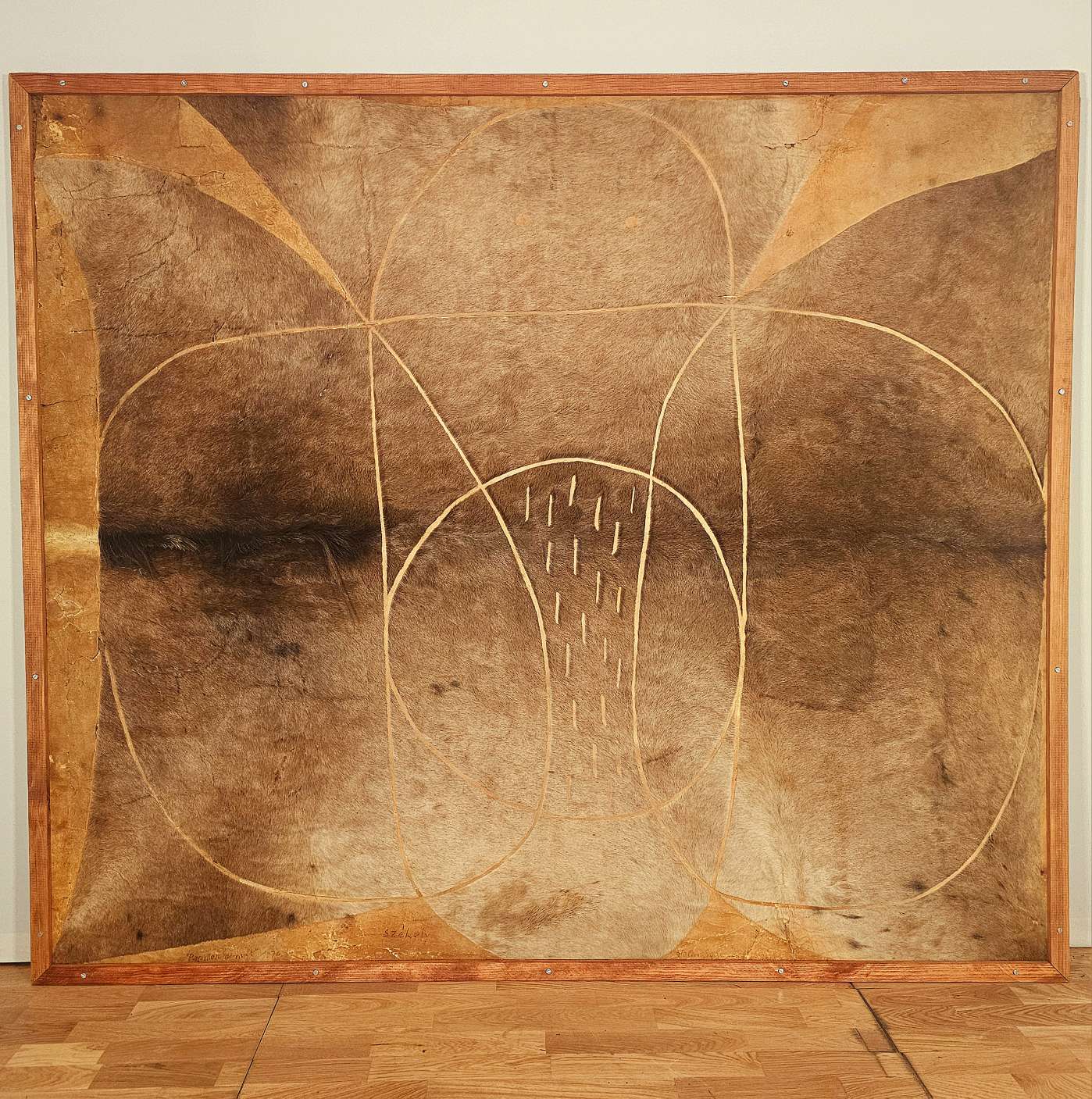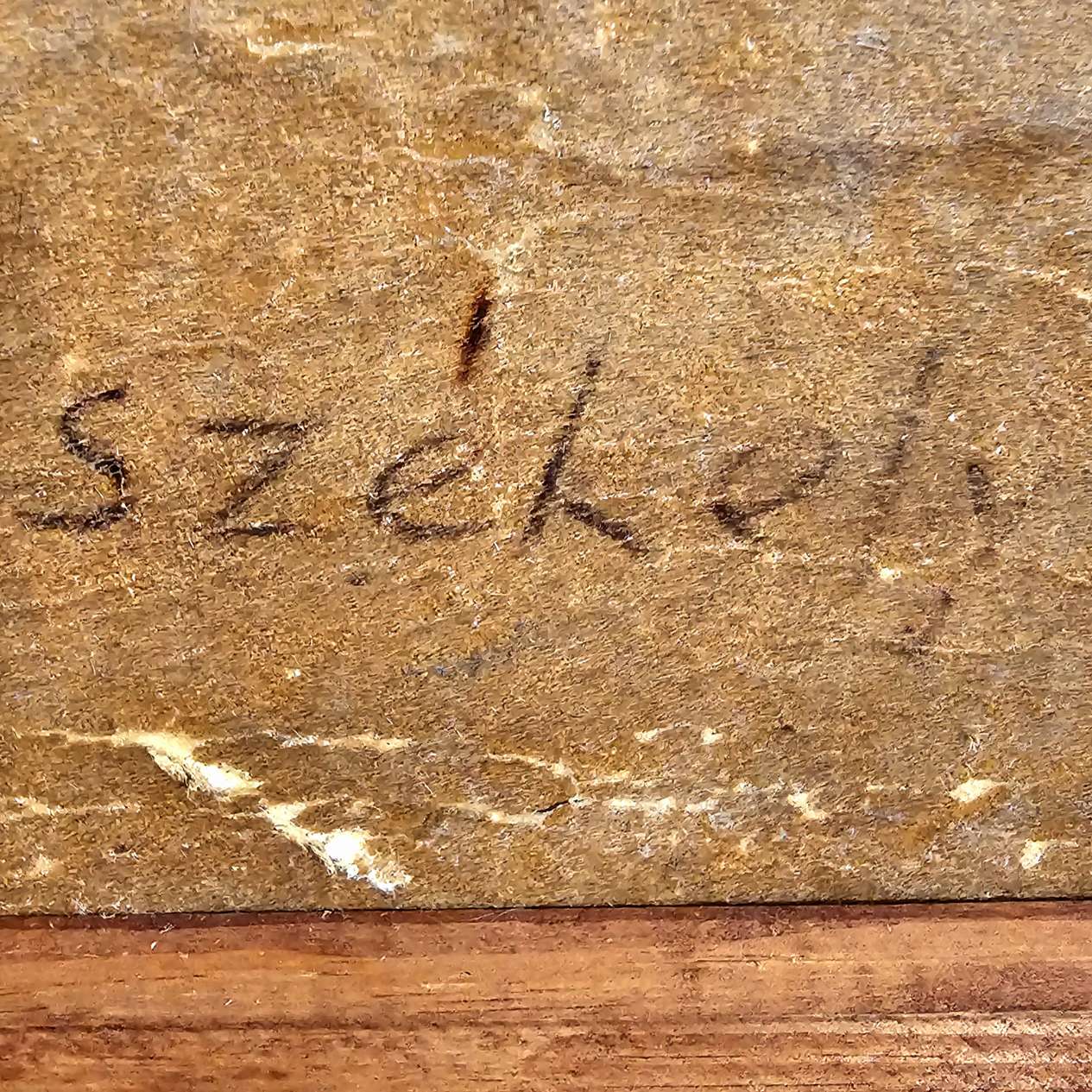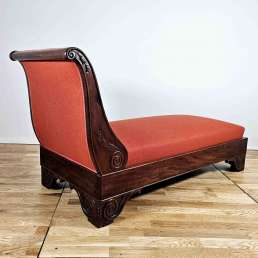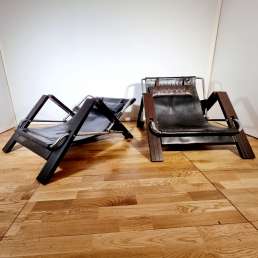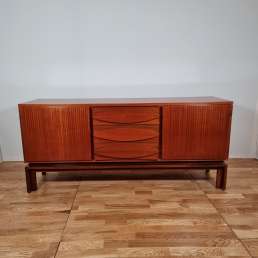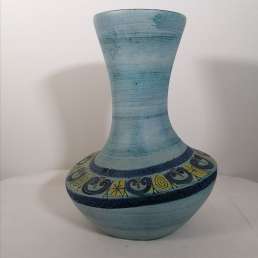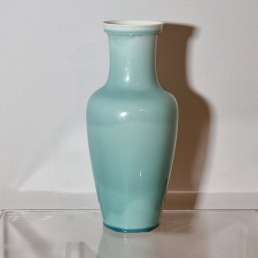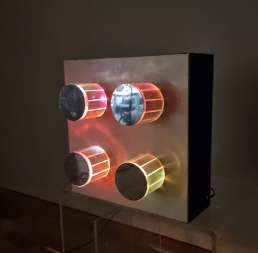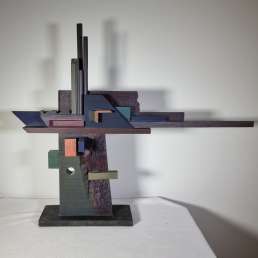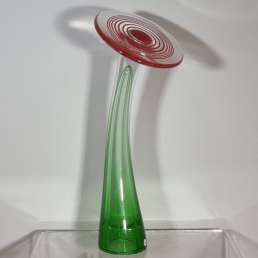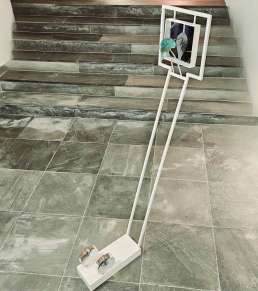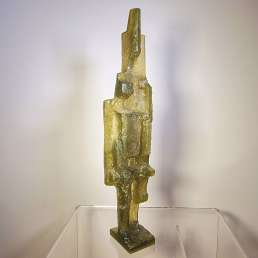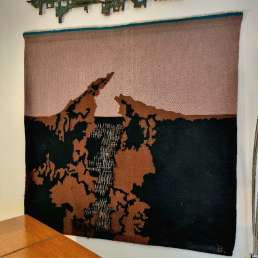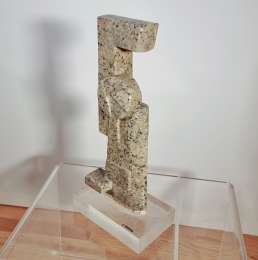Pierre Székely- Tapestry “Night butterfly-1976”, horse skin
Description
What I like
I like this work because it is a small experimental series of unusual tapestries developed by one of the great French artists of the second half of the 20th century, Pierre Székely. We know his work with his wife Vera and André Borderie, and that with Henri Mouette, in which he developed extremely unique monumental works, currently very popular, in the tradition of Véra’s ceramics.
Both the Bateau Ivre house and the leisure center built in Beg Meil are registered historic monuments or obtained the “Heritage of the 20th century” label! This shows the importance of these artists!
On the other hand, I find this reinvention of cave art, of tapestry in particular, fantastic, with this unprecedented use of horse skin! This technique was invented by Pierre Skekely himself.
The work is so original, with this decoration created by incising and shaving the hairs of this large horse hide, revealing the parchment, very sensitive to hygrometric variations.
Finally, the composition is both simple and dreamlike: simple, it nevertheless develops a beautiful composition, which gives a unique character to the interior where it is located.
I like the fact that this work was preserved by Sylviane Lisjak, creator of this tapestry, and her husband, Yves Benard.
I also like the fact that this tapestry is unique, as Mr. Pierre Karinthy, author of the artist’s catalog raisonné, confirmed to us!
I also like that these tapestries on horse skin, executed in a short period of time, were presented as tapestries: in fact the horse’s mane and the partial shaving of the hair create reliefs!
On the other hand, what a consecration was their presentation at the Monnaie de Paris in 1981!!
Finally, I think that Pierre Székely’s recognition is only just beginning: it’s time to jump on the fame train!
Technical description
Pierre SZEKELY (1923-2001) – Sylviane Lisjack Workshop
Night butterfly
Horse skin tapestry with incised and shaved decoration
Signed and dated 1976.
Wear and accidents, mainly on shaved parts
Bibliography: Szekely at the Monnaie de Paris, 1981, catalog printed by the Imprimerie Nationale on behalf of the Monnaie de Paris on November 20, 1981, n°134, page 70: note that in this catalog, the work is dated 1977 and bears the number XIII-77-1, which perhaps corresponds to the date of production by the Sylviane Lisjak workshop.
Provenance: in 1981, Sylviane Lisjak and Yves Benard collection, Orsay
This tapestry is included in the Catalog of the works of the sculptor Pierre Székely (1923-2001), established by Mr. Pierre Karinthy. The latter informed us by email that this copy was unique: the difference between the date written on the real tapestry (1976) and the date included in the catalog raisonné and in the exhibition catalog of the Monnaie de Paris is due to an error by the artist in his catalog (“The piece is unique. The dates can be within a year. It was the sculptor himself who wrote the dates in his handwritten catalog, he could have dated otherwise.PK » email of May 6, 2024).
Finally, our tapestry is preceded by a 1975 sketch from the Ursuline Museum in Mâcon.
Dimensions and weight
Height:165 cm – Width: 195 cm – Depth: 3 cm
With frame: Height: 173 cm- Width: 200 cm- Depth: 3 cm
Weight: 40 kg
Mix & Match
This very atypical work by the great sculptor Pierre Székely has a palette of browns, beiges, and a simple frame of natural wood sticks.
A range that will go wonderfully with the walnut of our large Banque de France office, which has straight but also curved lines, in line with the Moth motif!
But the very strong, but also restrained presence of our work means that our tapestry can also slip into a world of old furniture, natural wood veneer or even lacquer! Our mahogany chaise longue circa 1830 can very well be placed in front of “Nocturnal Butterfly”!
Obviously, the minimalist curves of the G10 armchairs by Pierre Guariche, but also those of the Grass hopper armchairs by Sonja Wasseur, those of the green Adirondack armchairs by Philippe Parent or the rounded corners of the Orsay set by Gae Aulenti will leave the light patterns of the Székely’s work develops in harmony.
I think that the large “Oeils” sideboard by Joseph André Motte also has elegant lines that could play with those of our tapestry.
On the walls, the “Composition metallica” tapestry by Enrique Broglia, using the same range of colors, a little darker, will fit very well with the coexistence of our large tapestry!
But we can create an interesting dialogue with works of geometric abstraction, such as the 1971 Composition of Lenin by Lima Medeiros or better still that of 1950/51 by Edgard Pillet!
In stock
Description
To know more
The artist
Pierre Székely, born in Budapest on June 11, 1923 and died in Paris on April 3, 2001, is a Hungarian sculptor and painter, settled in France after the Second World War.
From 1941, Péter Székely apprenticed in the workshop of Hanna Dallos in Budapest. Draftsman, graphic designer, wood engraver, the one he considers his “master in the Asian sense of the word”, was assassinated by the Nazis in 1945. He was sent to a work camp at the end of 1944. Székely was initiated there by carving stone. Then he finds himself at the start of a convoy of deportees to Germany. He escaped and wandered around Budapest until the city was liberated in April 1945. He produced drawings and posters and began to become known. He is engaged to Vera Harsányi.
In 1946, he undertook a study trip to Paris, where he settled permanently, francizing his first name to Pierre. In 1950, he moved with his wife, Vera Székely — an artist known for her ceramics — into a pavilion in Bures-sur-Yvette in the Chevreuse valley. There he created works influenced by surrealism, as well as his first abstract stone sculptures.
With his wife Vera Székely and the painter André Borderie, he is the author, in 1953, of the house Le Bateau ivre, located in Saint-Marcellin in the department of Isère. The interior and exterior of the house, the garage and the garden are the subject of registration as historical monuments by decree of September 14, 2007. Since 2003, the building has been labeled “Heritage of the 20th century” of Isère.
In 1955, Pierre Székely settled in Marcoussis. He remained there until 1976. He created drawings, objects in stone, ceramic, wood, metal, and objects of worship.
In 1957, he built a set of game sculptures in Clamart; this achievement will be followed by many others in L’Haÿ-les-Roses, Palaiseau, Amiens, Cambrai, Brest, Grenoble, etc.
From 1959, he created numerous sculptures, monumental works and installations. In collaboration with architects, he carried out several important projects: the leisure village of Beg Meil with Henri Mouette, the Carmel church of Saint-Saulve with Claude Guislain, a climbing sculpture in Évry (La Dame du Lac).
In 1966, he developed his flame-cutting technique for granite. In 1968, the year of the Mexico Olympic Games, he built Biped Sun on the Route of International Friendship.
In December 1975, on the occasion of the creation of the pedestrian sector of Boulevard Maréchal-Leclerc in the city center of Caen, a fountain created by Pierre Székely was installed. This sculpture, financed by the Caen municipality, was made from pink granite extracted from a quarry in the canton of Perros-Guirec in Côtes-d’Armor.
In 1981, a retrospective was organized at the Hôtel de la Monnaie in Paris. Our tapestry is exhibited there and is included in the catalog published on this occasion. In 1984, President François Mitterrand visited him in his studio and ordered several sculptures, including one for a gift to Menachem Begin. He also produced prints, drawings and wax paintings. He also created several hundred small sculptures. He considers that his works are neither abstract nor figurative, but “expressive”. His works are intended to be in harmony with the universe and with human nature.
He died in Paris on April 3, 2001, at the age of 77.
Works in museums:
Two open-air museums are entirely devoted to his work: one opened in 1991 in Pécs (Hungary), the other in 1993 in Sekigahara (Japan).
Other museums hold his works:
-the Vascœuil castle museum (Eure) exhibits sculptures in the park;
-the Ursulines museum in Mâcon (Saône-et-Loire) preserves numerous drawings by Székely;
-the FRAC Centre-Val de Loire in Orléans keeps around ten works in its arts and architecture department.
The editor
This is a unique work. The implementation and preparation of the horse skin were carried out in collaboration with the Sylviane Lysjak workshop, which can be found at the work of most of Pierre Székely’s tapestries.
A beautiful and authentic tapestry at a fair price
This Pierre Székely tapestry has been carefully selected for its aesthetic qualities, its originality and its fair price. Our choice favors above all the originality of this tapestry which is a unique work of art, of which the signature of Pierre Székely is a guarantee, a guarantee of the enhancement of your new acquisition in your interior and of an ability to dialogue with your furniture, to match and mix to create a unique decoration.
Buying a Pierre Székely tapestry from 1976 is surely a reasonable investment, such is the appetite for the 1970s, as well as the recognition of the importance of this great creator.
Finally, buying vintage works of art preserves the resources of planet earth.
Additional information
| Weight | 40 kg |
|---|---|
| Dimensions | 200 × 3 × 173 cm |


